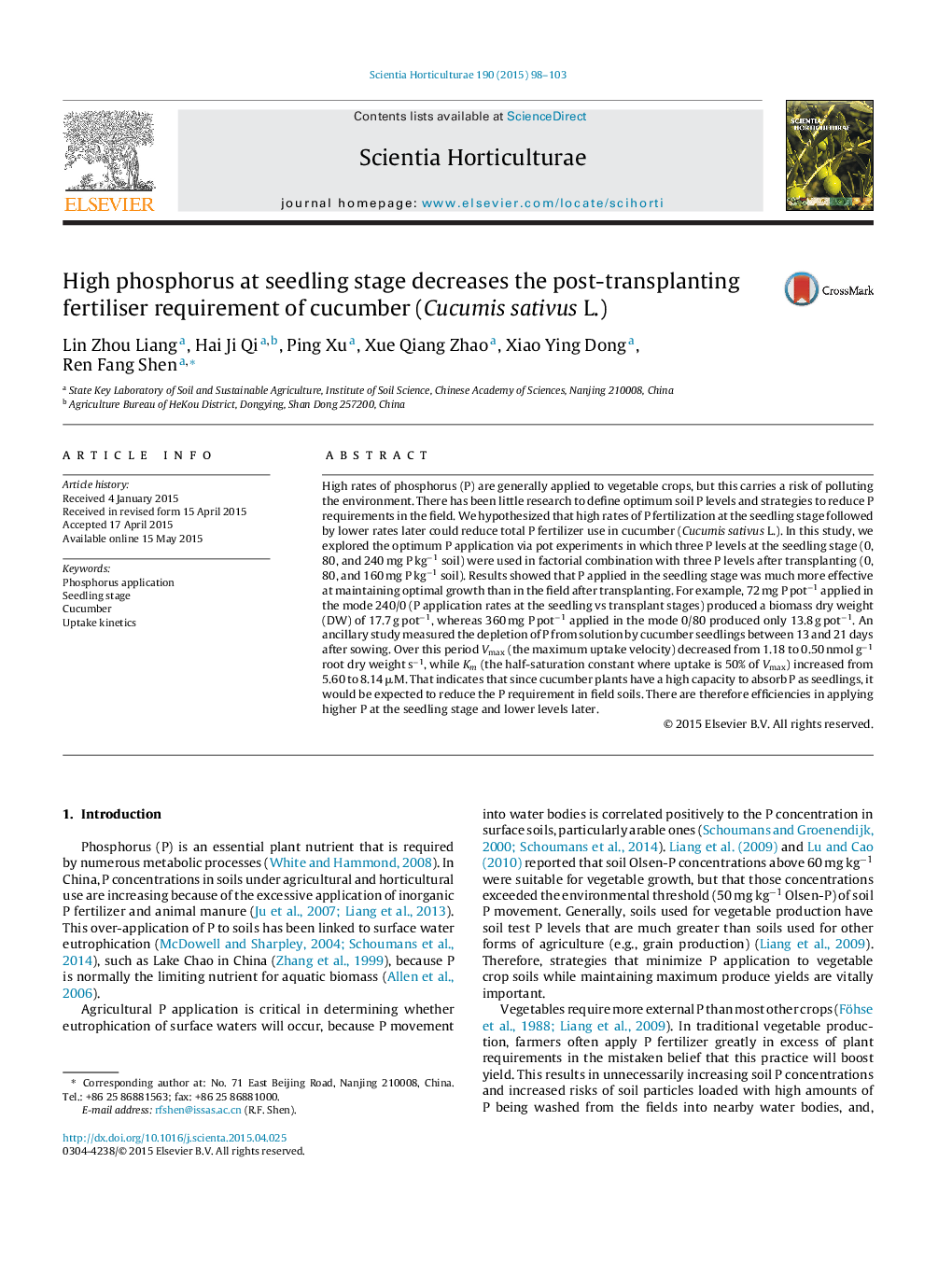| Article ID | Journal | Published Year | Pages | File Type |
|---|---|---|---|---|
| 4566152 | Scientia Horticulturae | 2015 | 6 Pages |
•High P fertilization at the seedling stage could reduce total P fertilizer use in cucumber.•Phosphorus applied in the seedling stage was effective at maintaining optimal growth.•Cucumber plants have a high capacity to absorb P as seedlings.
High rates of phosphorus (P) are generally applied to vegetable crops, but this carries a risk of polluting the environment. There has been little research to define optimum soil P levels and strategies to reduce P requirements in the field. We hypothesized that high rates of P fertilization at the seedling stage followed by lower rates later could reduce total P fertilizer use in cucumber (Cucumis sativus L.). In this study, we explored the optimum P application via pot experiments in which three P levels at the seedling stage (0, 80, and 240 mg P kg−1 soil) were used in factorial combination with three P levels after transplanting (0, 80, and 160 mg P kg−1 soil). Results showed that P applied in the seedling stage was much more effective at maintaining optimal growth than in the field after transplanting. For example, 72 mg P pot−1 applied in the mode 240/0 (P application rates at the seedling vs transplant stages) produced a biomass dry weight (DW) of 17.7 g pot−1, whereas 360 mg P pot−1 applied in the mode 0/80 produced only 13.8 g pot−1. An ancillary study measured the depletion of P from solution by cucumber seedlings between 13 and 21 days after sowing. Over this period Vmax (the maximum uptake velocity) decreased from 1.18 to 0.50 nmol g−1 root dry weight s−1, while Km (the half-saturation constant where uptake is 50% of Vmax) increased from 5.60 to 8.14 μM. That indicates that since cucumber plants have a high capacity to absorb P as seedlings, it would be expected to reduce the P requirement in field soils. There are therefore efficiencies in applying higher P at the seedling stage and lower levels later.
